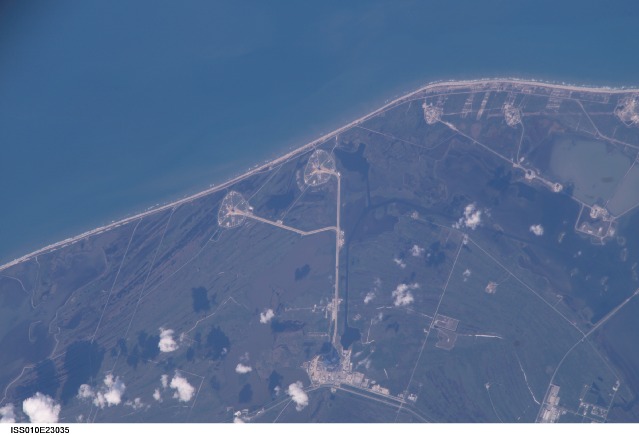| Home >> | Advanced Search >> |
 |
|
Astronaut Photography of Earth - Display Record
ISS010-E-23035

Low-resolution Browse Image
(Most browse images are not color adjusted.)Images
Conditions for Use of Images >>Image Transformation Tutorial >> Saving, Color Adjusting, and Printing Images >>
Images to View on Your Computer Now
| File Name | File Size (bytes) | Width | Height | Annotated | Cropped | Purpose | Comments | |
|---|---|---|---|---|---|---|---|---|
| View | ISS010-E-23035.JPG | 48802 | 639 | 435 | No | No |
Large Images to Request for Downloading
| File Name | File Size (bytes) | Width | Height | Annotated | Cropped | Purpose | Comments | |
|---|---|---|---|---|---|---|---|---|
| Request | ISS010-E-23035.JPG | 763721 | 3032 | 2064 | No | No |
Download a Keyhole Markup Language (KML) file for use in Google Earth.
Electronic Image Data
Camera Files >> No sound file available.Identification
Mission: ISS010 Roll: E Frame: 23035 Mission ID on the Film or image: ISS010Country or Geographic Name: USA-FLORIDA
Features: LAUNCH COMPLEXES, FALSE CAPE
Center Point Latitude: 28.6 Center Point Longitude: -80.6 (Negative numbers indicate south for latitude and west for longitude)
Stereo: (Yes indicates there is an adjacent picture of the same area)
ONC Map ID: JNC Map ID:
Camera
Camera Tilt: 46Camera Focal Length: 800mm
Camera: E4: Kodak DCS760C Electronic Still Camera
Film: 3060E : 3060 x 2036 pixel CCD, RGBG array.
Quality
Film Exposure:Percentage of Cloud Cover: 10 (0-10)
Nadir
Date: 20050406 (YYYYMMDD)GMT Time: 203601 (HHMMSS)Nadir Point Latitude: 25.3, Longitude: -80.1 (Negative numbers indicate south for latitude and west for longitude)
Nadir to Photo Center Direction: North
Sun Azimuth: 257 (Clockwise angle in degrees from north to the sun measured at the nadir point)
Spacecraft Altitude: 193 nautical miles (357 km)
Sun Elevation Angle: 40 (Angle in degrees between the horizon and the sun, measured at the nadir point)
Orbit Number: 446
Captions
Rollout of Shuttle Discovery, Kennedy Space CenterInternational Space Station Astronaut Leroy Chiao, like the rest of NASA, tracks key milestones for the Space Shuttle Return-to-Flight operations. A lucky overpass of the Space Station over Florida on April 6, 2005, allowed Leroy and his crew mate Salizhan Sharipov a unique view of the rollout of the Space Shuttle Discovery. At the time of his observations, Discovery was approximately midway between the Vehicle Assembly Building (VAB) and launch pad 39-B at Kennedy Space Center in Florida.
The Shuttle, mated with its solid-fuel booster rockets and orange external fuel tank, is visible on the wide Crawler-Transporter track (marked with white box and shown in an inset image). Moving at a maximum speed of 1 mile per hour (1.6 km/hr), the massive Crawler-Transporter, laden with a launch-configured Shuttle and Mobile Launch Platform, takes approximately 13 hours to move between the VAB and pad 39-B.
Launch of the Discovery will mark NASA’s “Return to Flight” following the loss of the Shuttle Columbia with its crew on February 1, 2003. The primary goal for the upcoming Discovery mission will be to test several vehicle modifications and damage-assessment data sources, tools, and procedures. These modifications include a modified design for the external fuel tank, more cameras focused on the launch and ascent of the Shuttle, and detailed imaging of the Shuttle’s heat-resistant tiles and reinforced carbon-carbon surfaces on the wings and nosecap.
Download Packaged File.
This option downloads the following items, packaged into a single file, if they are available:
- Browse image
- Cataloged information with captions
- Camera file
- Sound file
Server: 2 |
This service is provided by the International Space Station program. |

